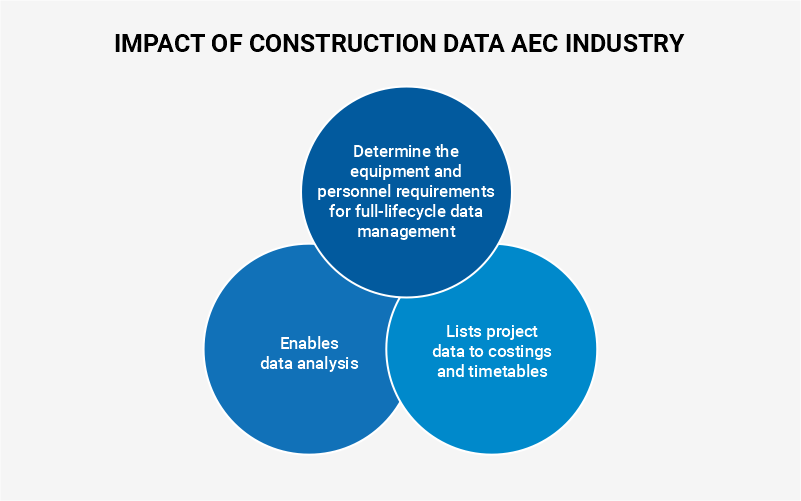Last Updated on November 23, 2023 by softtech
Every industry has been significantly impacted by global digitization, and the AEC sector is no exception. Data generation has increased as a result of consistent software use and the digitization of construction processes. Data are never in short supply in the AEC sector. Massive volumes of construction data are produced by every project, from design and planning to turnover and beyond. Access to the appropriate data at the appropriate time, however, is one of the most important difficulties that stakeholders face. Better decision-making and insight discovery depend on this stage.

Realize the need for a single platform
For the developed data to be useful, decision-makers must have access to it. Customers can understand the data because it is easily accessible. As a result, data collection on a single platform is required. What values does this common platform uphold? A unified platform is one that links individuals, data, and workflow over the course of a project. The unified platform streamlines and integrates a strategic planning process.
A shared data environment, commonly referred to as a unified platform, acts as a reliable single source of truth. The platform is more than just a group of APIs that connect to a SaaS solution because it functions as construction management software with APIs that give designers and engineers access to data and capabilities. The integrated platform supports the creation and marketing of items made by other parties. The single platform also controls the synchronization of the product work. Using a single platform streamlines the data sharing process.
Connect project information to costs and schedules
Cost certainty is essential for projects to succeed. With real-time project data on the unified platforms, the budgets can be easily monitored and coordinated. Customers are pleased and eager to collaborate with you on future projects when you stay within the agreed-upon timetable and price range. A well-managed budget increases profit margins. According to a study, bad scheduling, working overtime, and excessive spending are to blame for 60% of project failures. While erroneous construction data reduces profit margins, it has a detrimental influence on the project’s budget.
To counteract the effects of faulty data, construction companies need a data strategy. When it comes to planning, scheduling, and guaranteeing customer satisfaction in the construction industry, data and technology are game changers. The design, planning, building, and operation phases of the construction lifecycle are impacted by the data. Construction companies must communicate, link, and integrate data schedules using scheduling solutions to prevent data management issues. The scheduling tools help stop expense expansion.
Activate the potential of data analysis
Data analysis produces judgements that are reasonable. Architecture data mapping unlocks the full potential of data analysis. A better knowledge of data use is made possible through data mapping. The data analysis establishes the unified platform’s single source of truth for the gathered data. Analyzing data makes it easier to collaborate, be more accountable, and reduce data waste.
Establish the hardware and staffing needs for full-lifecycle data handling
Keeping data safe is a difficult procedure. AEC stakeholders may receive data more quickly and readily by streamlining complicated data generation and storage processes. The background-running systems have an effect on collaboration and mental processes as a result of a lack of connectivity. If the AEC businesses want to develop the systems for effective lifetime data analysis, they must be cautious in the tools and technology they use. It is possible to leverage internal IT staff to streamline procedures. Upskilling the workforce with the aid of internal and external resources, which fosters data creation, promotes a data-driven culture.
Studies show that the decisions made by construction software platforms are dependent on the data collected. Increased data accessibility is made possible via an uniform platform across the AEC lifecycle. Putting into practise a data management plan encourages data analysis and helps set up the procedures for storing data. If construction data were used more wisely, the AEC sector might undergo significant change.
About Author
Olivia Jones
Technology Specialist
Olivia is a highly skilled and experienced Technology Specialist with 10+ years of hands-on expertise in the rapidly evolving field of technology. She has a proven track record of successfully implementing and managing a wide range of technological solutions, ensuring optimal performance and efficiency. Olivia possesses a deep understanding of industry trends and emerging technologies, enabling her to provide strategic guidance and drive innovation within organizations. With a strong focus on problem-solving, she consistently delivers tailored solutions that align with business objectives while maximizing productivity and cost-effectiveness.
About SoftTech Engineers
A leading IT company (www.softtech-engr.com) facilitating business and technology transformation across the AEC industry through innovative software products and solutions. Equipped with 25+ years of deep domain expertise and industry knowledge, SoftTech has helped more than 4500 clients & government organizations, with more than 25000 users in India and around the world to gain a competitive edge and lead from the front in the industry.

